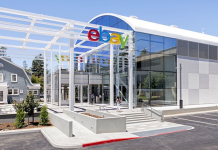Tom Konrad CFA
In 2007 and 2008, high gasoline prices gave a large boost to mass transit ridership. Here are the stocks that might benefit if that scenario repeats itself.
Americans are notoriously attached to their cars, but high oil prices in 2007 and 2008 led many to get on a bus or train. According to a 2009 paper Transit Ridership Models:
Present Status and Future Needs [pdf] by Grace Galluci and John D Allen, Ph.D. from Chicago’s Regional Transportation Authority, current published transit ridership models do not yet incorporate changes in gasoline prices. The authors consider this a serious omission, since, in addition to the obvious intuitive link between gas prices and ridership, they found a strong correlation between gas prices and transit ridership using CRTA ridership data and local gasoline prices. The following chart comes from this paper, and shows ridership following the local gas price (with a slight lag.)

Gas Price and Transit Profits
Although it may be safe to assume that transit ridership will increase with rising gas prices, a higher gas price may not make mass transit companies more profitable, since diesel to fuel buses and locomotives is a major expense for many mass transit agencies. Hence, an investor expecting increases in the price of oil should prefer mass transit operators with fleets that use less diesel per passenger mile, and the suppliers to such operators. Operators and suppliers of electric rail and trolleys are best in this regard, followed by operators and suppliers of fuel efficient hybrid buses and similar vehicles. Vendors of Smart Transportation systems that allow transit operators to match vehicle capacity to demand in real time should also benefit, since the simplest way to reduce fuel use per passenger mile is to replace fuel guzzling buses with smaller vans at non-peak times, while adding vehicles at peak.
Mass Transit Stocks
Most transit authorities are public entities, but there are still a good number of public companies that provide goods and services to the sector. What follows is a list of those companies culled from our Alternative Transport Stock List with significant exposure to mass transit. For each stock, I include a description of its mass transit business, and how exposed the company is to rising oil prices.
Mass Transit Vehicle Suppliers
Alstom (ALO.PA, AOMFF.PK). About one third of Alstom’s business is as a supplier of locomotives for transit and high speed rail applications, in addition to signaling and support services. Alstom supplies the locomotives for France’s high-speed TGV trains. The balance of Alstom’s business is in electrical power generation, with strong presences in Hydropower, Natural Gas, Steam, and Nuclear generation, in that order. Rising oil prices should benefit Alstom’s transportation business, since high speed trains are a much more fuel-efficient alternative to air transport.
About one third of Alstom’s business is as a supplier of locomotives for transit and high speed rail applications, in addition to signaling and support services. Alstom supplies the locomotives for France’s high-speed TGV trains. The balance of Alstom’s business is in electrical power generation, with strong presences in Hydropower, Natural Gas, Steam, and Nuclear generation, in that order. Rising oil prices should benefit Alstom’s transportation business, since high speed trains are a much more fuel-efficient alternative to air transport.
Bombardier Inc (BDRBF.PK, BBD-B.TO, BBD-A.TO). Bombardier is another high speed rail stock, with a slightly greater market share for high speed locomotives than Alstom. A little over half of Bombardier’s revenues and profits come from high speed rail, with the balance coming from aerospace: they also sell regional and corporate jets. Hence, while Bombardier has a larger percentage exposure to high speed rail than Alstom, the company is more likely to be hurt by rising oil prices than helped, because of the large exposure to aviation.
New Flyer Industries (NFI-UN.TO, NFYIF.PK).  New Flyer is the largest manufacturer of heavy-duty transit buses in North America, and also one of my Ten Clean Energy Stocks for both 2009 and 2010. New Flyer builds transit buses for transit operators powered by a wide variety of fuels, from diesel, to diesel-electric hybrids, Compressed and Liquefied Natural Gas, electric trolley buses, and even supplied the fleet of Hydrogen Fuel Cell buses for the Vancouver Olympics. Rising bus ridership from rising oil prices increases the demand for buses, and also increases the incentive of transit authorities to invest in the more expensive (and profitable to New Flyer) electric hybrid buses. The beneficial effects of rising oil prices should be felt more quickly by New Flyer than by suppliers of passenger locomotives, since transit authorities can expand bus systems and switch to hybrid buses much more quickly than they can expand rail transit systems.
New Flyer is the largest manufacturer of heavy-duty transit buses in North America, and also one of my Ten Clean Energy Stocks for both 2009 and 2010. New Flyer builds transit buses for transit operators powered by a wide variety of fuels, from diesel, to diesel-electric hybrids, Compressed and Liquefied Natural Gas, electric trolley buses, and even supplied the fleet of Hydrogen Fuel Cell buses for the Vancouver Olympics. Rising bus ridership from rising oil prices increases the demand for buses, and also increases the incentive of transit authorities to invest in the more expensive (and profitable to New Flyer) electric hybrid buses. The beneficial effects of rising oil prices should be felt more quickly by New Flyer than by suppliers of passenger locomotives, since transit authorities can expand bus systems and switch to hybrid buses much more quickly than they can expand rail transit systems.
My most recent in-depth look at New Flyer is here.
Vossloh AG (VOS.DE, VOSSF.PK). Vossloh supplies rail fastening systems, switching, services, and locomotives, both diesel and electric. Unlike Alstom and Bombardier, all of Vossloh’s business is related to rail transit, making it a good bet in an era of long term rising oil prices.
Mass Transit Operators
Firstgroup, PLC (FGP.L, FGROF.PK). Firstgroup operates mass transit services in Britain and North America. In North America (37% of revenues), they operate the Greyhound bus brand, and subcontract the yellow student bus service for school districts. In the UK (53% of revenues), they operate both bus (19%) and rail (35%) services both competitively and on behalf of transit authorities. The balance of revenues comes from mass transit contracts in the rest of Europe.
Firstgroup operates mass transit services in Britain and North America. In North America (37% of revenues), they operate the Greyhound bus brand, and subcontract the yellow student bus service for school districts. In the UK (53% of revenues), they operate both bus (19%) and rail (35%) services both competitively and on behalf of transit authorities. The balance of revenues comes from mass transit contracts in the rest of Europe.
Fristgroup uses financial markets to hedge fuel price risk, and so stands to benefit in the short term from increases in ridership caused by oil prices.
Mass Transit Equipment and Service Suppliers
Cubic Corporation (CUB). Cubic is primarily a defense contractor (70% of sales) that also provides fare collection systems and services to transportation authorities (30% of sales.) While I like the Smart Transportation potential of the company’s IT and fare collection expertise, Cubic is only likely to benefit over the very long run as increases in mass transit ridership lead to increased demand for the company’s services.
Cubic is primarily a defense contractor (70% of sales) that also provides fare collection systems and services to transportation authorities (30% of sales.) While I like the Smart Transportation potential of the company’s IT and fare collection expertise, Cubic is only likely to benefit over the very long run as increases in mass transit ridership lead to increased demand for the company’s services.
L. B. Foster (FSTR). L B Foster supplies a diversified mix of construction materials to the transportation industry,  with 47% of sales coming from rail (although not exclusively mass transit) products. The balance of sales come from sales of steel pilings, fabricated bridges and concrete buildings, and tubular coated products. The large fraction of sales to the rail industry should help the company over the long term in a rising oil price environment. The benefit of rising oil prices should increase if L B Foster succeeds in its cash takeover of Portec Rail products, discussed below. An in-depth discussion of the L.B. Foster bid for Portec Rail Products is available here.
with 47% of sales coming from rail (although not exclusively mass transit) products. The balance of sales come from sales of steel pilings, fabricated bridges and concrete buildings, and tubular coated products. The large fraction of sales to the rail industry should help the company over the long term in a rising oil price environment. The benefit of rising oil prices should increase if L B Foster succeeds in its cash takeover of Portec Rail products, discussed below. An in-depth discussion of the L.B. Foster bid for Portec Rail Products is available here.
Portec Rail Products (PRPX). As its name implies, Portec exclusively provides products and services to the rail and rail transit industries. Products include lubrication and friction management (reducing noise, wear, and fuel use), track components, load securement, rail car repair, and environmental protection products for rail corridors. If the L B Foster buyout goes though, shareholders will be paid in cash, so Portec is not currently a way to speculate on rising oil prices, but if the takeover fails, Portec’s pure-play rail exposure should serve it well in a rising oil price environment.
As its name implies, Portec exclusively provides products and services to the rail and rail transit industries. Products include lubrication and friction management (reducing noise, wear, and fuel use), track components, load securement, rail car repair, and environmental protection products for rail corridors. If the L B Foster buyout goes though, shareholders will be paid in cash, so Portec is not currently a way to speculate on rising oil prices, but if the takeover fails, Portec’s pure-play rail exposure should serve it well in a rising oil price environment.
Wabtec Corporation (WAB). Wabtec, also known as Westinghouse Air Brake Technologies Corporation, primarily serves the freight and passenger rail industries, supplying braking and other safety systems for both rail cars and locomotives. As a pure-play rail supplier, Wabtec is well-placed to benefit from long term, sustained higher oil prices.
| Stock | Percent of Sales from Transit & Rail |
| Alstom (ALO.PA) | 33% |
| Bombardier Inc (BDRBF.PK) | 55% |
| New Flyer Industries (NFYIF.PK) | 100% |
| Vossloh AG (VOS.DE) | 100% |
| Firstgroup, PLC (FGP.L) | 100% |
| Cubic Corporation (CUB) | 30% |
| L. B. Foster (FSTR) | 47% |
| Portec (PRPX) | 100% |
| Wabtec (WAB) | 100% |
Thanks to Jim Hansen of Ravenna Capital Management for bringing Vossloh AG to my attention.
DISCLOSURE: LONG PRPX, NFYIF
DISCLAIMER: The information and trades provided here are for informational purposes only and are not a solicitation to buy or sell any of these securities. Investing involves substantial risk and you should evaluate your own risk levels before you make any investment. Past results are not an indication of future performance. Please take the time to read the full disclaimer here.






